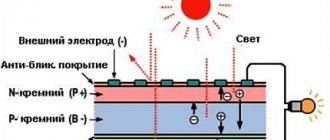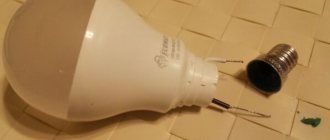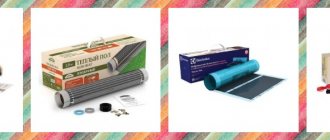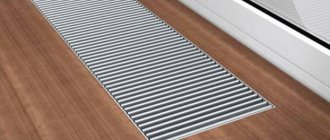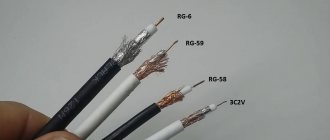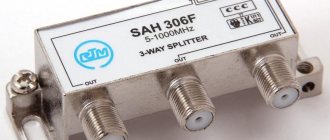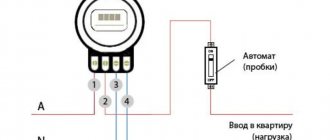In the off-season, when it is already cold and damp, sales of electric heaters increase sharply. The most popular types of appliances are convectors and fan heaters. They are inexpensive, compact, perfectly heat rooms and are in approximately the same demand.
And yet there is a significant difference between them. In this article, we will figure out which is better – a convector or a fan heater for heating a house, taking a close look at each type of heater. We will also dwell on the operating principle and design of each of them, and provide a list of the best equipment manufacturers according to customers.
Features of using heating devices
Fan heaters and convectors are often purchased for apartments in high-rise buildings, but sometimes they are also needed in houses. In an apartment, the heater serves as the main heating system in cold weather, and in a private house the owner can use it as an additional and/or alternative heating system.
The devices are also installed in rooms that require special temperature conditions (children's rooms, bathrooms, etc.).
Fan heaters are ideal if you need to quickly warm up the air. They are indispensable in the cold season at dachas, garages, workshops, etc. Convectors require more time, but their operation is more stable and energy consumption for heating is less
The basis for a meaningful choice of any device is an understanding of the principle of its operation, design, disadvantages and advantages. There is no ideal and universal technology, so you need to figure out which models are best suited for specific operating conditions. You should also decide on your own needs, priorities and expectations.
What's better to buy?
If you are faced with a choice: buy a convector or a fan heater, then you need to consider the following:
- If the heater is purchased for several years, then it is better to choose a convector. If you connect one network, it will be possible to heat several rooms at once. The main factor will be the presence of a thermostat with which you can adjust the temperature;
- If you need to quickly heat a room for a short period of time, then the choice is obvious - a fan heater;
- The best option would be to combine a convector and a fan heater. First, the first will quickly heat the air, and the second will maintain the required temperature.
In this article we tried to explain to you the difference between convectors and fan heaters. We also examined in detail all the advantages and disadvantages of these types of heaters, and the principle of their operation. All you have to do is decide what is preferable for you and make a purchase.
See also -
Which heater does not burn oxygen and does not dry out the air?
Main characteristics of the fan heater
Fan heaters are inexpensive and efficient devices that are purchased for heating residential, administrative, and industrial premises.
By choosing the right model, you can create a warm zone within a few minutes. To do this, you just need to point the fan heater in the desired direction and turn it on.
This is an excellent choice if you need to quickly warm the air in a separate area of the room. Such fan heaters are installed next to beds and work tables. They are also used if you urgently need to finish drying washed items.
Large stationary models are installed on the floor or mounted on walls, while mobile ones are easy to carry, rotate, and move to another location.
The housings of the devices do not overheat, so there are no special requirements for surfaces. Fan heaters are placed on any floor coverings, tables, cabinets.
An ideal option for heating a living space or office during the off-season. The model can be installed so that it creates a thermal curtain at the entrance to the room or at the window
Operating principle of the device
The principle of operation is simple: cold air enters a closed or open heating element, instantly warms up, and the fan throws it out.
The result is the effect of a warm wind that blows across people and objects in the room. Heated air flows are mixed with cold ones, thanks to which a comfortable temperature is quickly established in the room.
Hot air moves forward - in the direction where the device is pointed, and then rises. The distance that the heat flow travels depends on the power and design features of the model
When choosing, focus on the desired power and noise level. We recommend looking at detailed recommendations for choosing a fan heater, taking into account key criteria.
The choice is also influenced by the type of heating element of the fan heater, depending on which the following types of devices are distinguished:
- Spiral . The heaters are made of spiral nichrome wire. In working condition, their temperature can reach 800°C. Despite their high efficiency, these heaters are considered not the best choice, because... During operation they burn dust and moisture.
- Heating elements. The temperature of the heating element does not exceed 200°C, but this does not affect the quality of work due to its large area. The models are fireproof, convenient, but more expensive than spiral models.
- Ceramic . The elements heat up much less - up to 200°C, and do not burn out the air. They are absolutely safe and easy to use.
Spiral models have almost lost their popularity among buyers. Because as a result of their work, the air becomes dry and an unpleasant odor appears.
Users call the ceramic fan heater the most preferred option. This is the best choice for today. If you buy a model from a reliable brand, it will serve for a long time and without failure.
Advantages and disadvantages of fan heaters
The advantages of fan heaters include compactness and high air heating speed. Almost all models are equipped with control panels for operating modes, temperature sensors, and some also have remote controls.
In some cases, uneven heating is a plus. If some area in the room needs more intense heating than others, you should choose a fan heater
Fan heaters also have disadvantages: noise during operation and uneven heating of the room.
As for noise, it is impossible to completely solve this problem. The rotating fan blades will make sounds in any case. The noise may be greater or less, but it will always be there. You'll have to come to terms with this.
Brief overview of the best brands
In the rankings of the best manufacturers of fan heaters, the leaders are the same companies that produce the most reliable convectors: Ballu, Timberk, Vitek, Electrolux, Saturn, Polaris, AEG, NeoClima, Scarlett, Teplomash and others.
Image gallery
Photo from
Ballu - inexpensive spiral models
Electrolux - the best wall-mounted models
Vitek – reliable floor fan heaters
"Teplomash" - the best heating element fan heaters
When choosing a fan heater or convector, it is worth considering that many of them are assembled in China. It is better to pay attention to manufacturers who strictly control product quality and buy models from those brands that have well-organized service centers.
Have you decided to get a fan heater, but don’t want to overpay for the brand? In this case, you can assemble a homemade fan heater from scrap materials.
Convector
This heater warms the air in the room as follows:
- Cold masses go inside through a grate located at the bottom of the product.
- After passing through the heater element, the air becomes warmer and exits through the grille on the top panel. The flow is then smoothly distributed in space.
Many of the device models have a moisture protection class (marked as IP24), which allows them to be used in bathrooms and saunas.
Types of convectors are classified as follows:
- gas;
- electrical;
- water;
- infrared.
Among the advantages of the technology, users note the following points:
- quick heating of the air in the room;
- fire safety;
- different mounting options;
- built-in thermostats (you can set the required temperature level);
- the ability to create a network of several devices (this solution will heat the entire house);
- no noise;
- operational safety;
- interesting and original design;
- duration of service.
Even this technique has its drawbacks. Since heating occurs by natural convection, the room may not heat up quickly enough. For the same reason, it will be difficult for a heater of this type to heat a high room. Also, this technique is very afraid of voltage surges, and in case of drafts, malfunction is possible.
All this leaves an imprint on the choice of models with certain thermostat capabilities (preferably, it can regulate the temperature exactly to the degree).
What type of heating device is better to choose?
It all depends on the goals of the owner of the premises. If you need to achieve uniform heating of the entire area, and speed is not important, then it is better to install a convector.
If the main goal is to obtain a directed flow of hot air and instant heating of a specific area in the room, a fan heater would be the best choice.
You can easily install a fan heater in your home office or office. The measured hum of the blades will not interfere, but will only help you concentrate, cutting off external sound stimuli
In residential premises, convectors are often installed due to the lack of noise, and for an office, where there is always some sound, a fan heater is appropriate.
None of the devices discussed above suits you? We recommend that you familiarize yourself with the most popular types of heaters for homes and apartments, and tips for choosing the best one.
Defrosting the air conditioner and heating the pan
The water that thaws from the radiator grilles flows into the pan and ice begins to accumulate there. If it is not removed, it bends and deforms the heat exchanger tubes. Here are the clear consequences of such freezing.
Sometimes he even gets to the fan. To prevent this from happening, choose models with a heating cable built into the tray.
If you don’t have one, you’ll have to remove the lid of the device each time and use a hot kettle to pour over the frozen areas. You can’t knock anything down manually, otherwise in the cold you’ll only make it worse.
A heating cable built into the tray is an extra expense of electricity, which manufacturers are silent about. It turns on based on the temperature sensor and will generate kilowatts, even if the air conditioner is not working, but is simply plugged into the outlet.
About 2 kW can run per day.
In the tray of non-sophisticated models, you can build your own cable, bringing out the wires for connection in a separate circuit. Attach a plug to the end of the cable and turn it on through the timer socket.
In order to determine the optimal operating time, observe the air conditioner for several days and record the moments when ice forms.
Please note that if you have a new condo, you cannot drill any holes for cable fastening or additional water drainage, otherwise you will lose your warranty. Craftsmen use neodymium magnets to secure the cable.
A similar cable is used for roof heating or for heated floors outdoors.
In addition to the pallet, a couple or three turns of such wire are made around the compressor. In cold weather, this prevents the oil from thickening and makes it easier to start the device.
However, if your split system is not initially designed to operate in winter, such a home-made winter kit will not help, and even harm!
In these devices, the compressor has a slightly different winding configuration. In addition, the valves in them are designed for different condensation/boiling pressure modes.
You will also need an electronic expansion valve to keep the freon overheating on the evaporator to a minimum, and therefore work as efficiently as possible under any thermal conditions from -30C to +15C. Without all this, you will ruin your device.
One thing should not be confused with all this heating - factory winter kits for air conditioners are designed to work in winter for cooling!
When working with heat, you only need to warm up two things:
compressor crankcase
pallet
During the defrosting process, ice will accumulate under the air conditioner.
It would be good if it was in the form of a stalactite. He knocked it down with a crowbar and threw it aside. But most often it spreads over a large area, causing heaving of the soil and even movement of the foundation.
How to deal with this? Place a deep rubber tray under the air conditioner. All you have to do is periodically pull it out and shake it free of ice.
